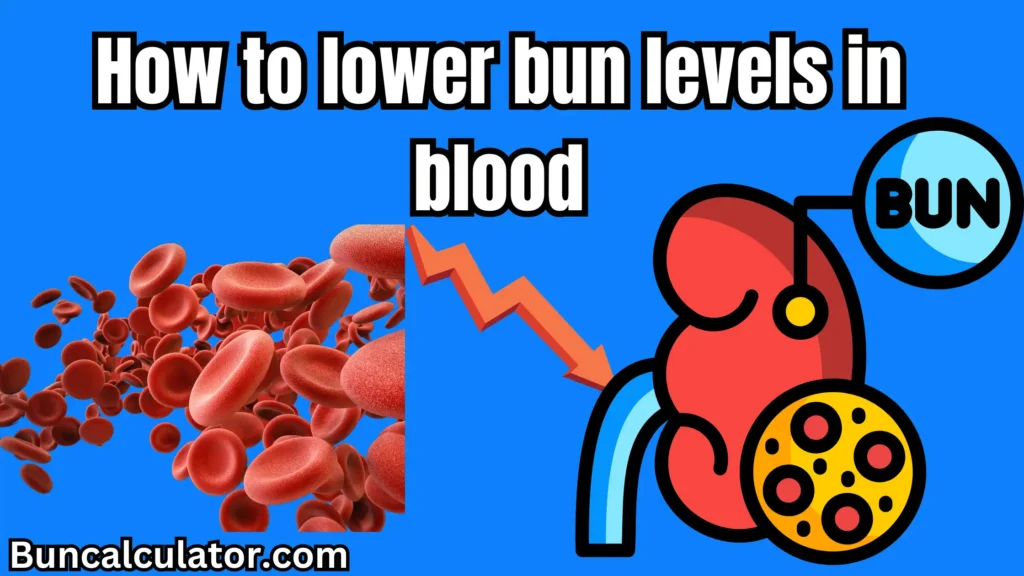How to Lower BUN (Blood Urea Nitrogen) Levels: Tips from a Lab Technician How to lower bun levels in blood dont worry i am here to tell you how its worked.

How to lower bun levels in blood: Tips from a Lab Technician
Hello readers! If you’ve been told your BUN levels is high, you might be worried. But don’t panic here hamza lab expert is here to help you deeply. I’m here to break down what BUN means, why it matters, and practical ways to lower it. As someone who worked at Shadab Lab as a lab technician, performing 100+ BUN tests daily, I’ve seen firsthand how small changes can make big differences. Let’s dive in!
What is BUN?
BUN stands for Blood Urea Nitrogen. It’s a measure of how much nitrogen from urea a waste product is in your blood. When you eat protein, your liver breaks it down into ammonia, which converts into urea. Healthy kidneys filter urea out through urine. If your kidneys aren’t working well or your body’s dehydrated, BUN levels rise.
At Shadab Lab, we often paired BUN tests with creatinine and eGFR tests to check kidney health. Normal BUN ranges from 7-20 mg/dL, but this can vary by lab.
Why High BUN Happens: Common Causes
- Dehydration: Not drinking enough water concentrates your blood, spiking BUN temporarily.
- High Protein Diet: Eating too much protein (meat, supplements) increases urea production.
- Kidney Issues: Damaged kidneys struggle to filter urea.
- Medications: NSAIDs (like ibuprofen) or antibiotics can harm kidneys over time.
- Other Conditions: Heart failure, diabetes, or bleeding in the gut.
In the lab, I’d often see young gym-goers with high BUN from protein shakes, while older patients had elevated levels due to kidney disease.
Symptoms of High BUN
Most people don’t feel symptoms unless levels are very high. Look out for:
- Fatigue
- Swollen feet/face (edema)
- Frequent urination (or not urinating enough)
- Nausea or confusion (in severe cases)
One patient at Shadab Lab came in feeling dizzy and also nturns out, their BUN was 45 mg/dL due to dehydration from diarrhea. After IV fluids, it dropped to 18 mg/dL
6 Ways to Lower BUN Levels
1. Drink More Water
Hydration is the easiest fix. Water dilutes urea and helps kidneys flush it out. Aim for 8-10 glasses daily. Avoid sugary drinks or excess coffeethey dehydrate you.
Lab Insight: Many patients with BUN 25-30 mg/dL saw normal levels after a week of drinking 2 liters of water daily.
2. Adjust Your Protein Intake
Reduce protein if your BUN is high. Swap red meat for plant-based proteins (beans, lentils) or eggs. Consult a dietitian to avoid deficiencies.
At Shadab Lab, a bodybuilder’s BUN dropped from 32 to 15 mg/dL after cutting protein shakes and eating more veggies.
3. Manage Underlying Health Issues
Control diabetes, hypertension, or heart disease where they strain kidneys. Monitor blood sugar and salt intake.
4. Avoid Kidney-Harming Medications
NSAIDs (e.g., aspirin), some antibiotics, and contrast dyes can raise BUN. Ask your doctor for alternatives.
5. Treat Infections Promptly
UTIs or kidney infections can spike BUN. If you have fever or pain while peeing, get tested!
6. Quit Smoking and Limit Alcohol
Both damage blood vessels, reducing kidney efficiency.
When to See a Doctor
If your BUN stays high despite hydration and diet changes, consult a nephrologist. Persistent high BUN + high creatinine often signals kidney disease.
At Shadab Lab, we’d flag patients with BUN >25 mg/dL and creatinine >1.2 mg/dL for further testing.
My Experience with BUN Testing Performing 100+ tests daily taught me nuances:
- Fasting isn’t required, but avoid heavy protein meals before tests.
- Hemolysis (broken blood cells) can skew results
- Age matters: Elderly patients often have slightly higher BUN due to lower kidney function.
One memorable case: A 50-year-old man’s BUN was 80 mg/dL! He had advanced kidney failure and needed dialysis. It highlighted how crucial early detection is.
Final Thoughts
High BUN isn’t always dire it could just mean drink more water or eat less steak. But don’t ignore it. Regular check-ups, especially if you’re over 40 or have diabetes, are key.
At Shadab Lab, we emphasized repeat testing. One patient’s BUN went from 28 to 12 mg/dL in two weeks just by hydrating and cutting processed meats
